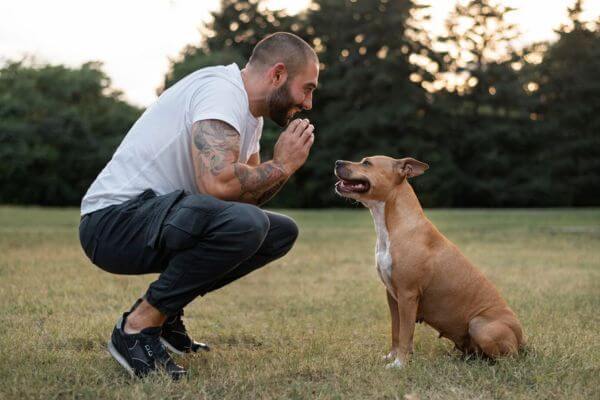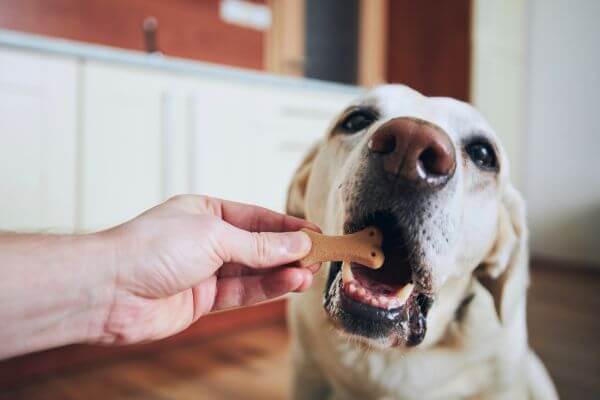Understanding canine behavior is essential for effective training and fostering a positive relationship with your dog. In this article, we explore the actions and reactions of dogs.
The Importance of Canine Behavior

Understanding canine behavior is crucial for ensuring harmony at home. Dogs primarily communicate through body language. Observing signals such as tail, ears, and posture helps interpret their feelings. This knowledge is essential to prevent conflicts and promote a peaceful environment.
Additionally, identifying specific behaviors allows for effective problem-solving. For example, a dog that barks excessively may be anxious or bored. Recognizing these causes is the first step to correcting the behavior. Using positive reinforcement techniques, such as rewards, we can gently modify behaviors.
Canine behavior is also influenced by external factors. Changes in the environment, routine, or health can affect a dog’s behavior. Therefore, it is important to maintain a stable routine and provide appropriate stimuli. Understanding canine behavior helps build a stronger and healthier bond with your pet.
Body Language and Canine Communication

Dogs use body language to communicate. Ear position can indicate their emotional state. Ears back usually signify fear or submission. In contrast, erect ears indicate attention or alertness. Understanding these subtle nuances helps interpret a dog’s intentions correctly.
The tail is another crucial indicator. A rapidly wagging tail can suggest excitement. However, a tail between the legs indicates fear or anxiety. Observing the tail in combination with other signals is essential for accurate reading. Body language complements verbal communication in dogs.
A dog’s eyes also convey much. Wide eyes can indicate surprise or fear. Slow blinking is a sign of relaxation and trust. Therefore, paying attention to your dog’s eyes is fundamental. This understanding enhances communication and strengthens the bond between owner and dog.
Positive Reinforcement Techniques in Training
Using positive reinforcement techniques is the most effective way to train dogs. This method is based on rewarding desired behaviors. By offering treats or praise, we encourage the dog to repeat the behavior. This approach is friendly and promotes enjoyable learning for the dog.
Positive reinforcement should be applied consistently. Each time the dog performs a correct action, it should be rewarded immediately. This consistency helps the dog associate the reward with the correct behavior. Gradually, the dog learns to repeat positive actions without constant need for rewards.
Additionally, positive reinforcement strengthens the bond between owner and dog. The dog learns to trust the owner and associates training with positive experiences. This method also reduces stress and anxiety during training. With patience and consistency, positive reinforcement turns training into a rewarding experience for both.
Recognizing and Correcting Problem Behaviors
Identifying problem behaviors is the first step to correcting them. Dogs can develop undesirable behaviors for various reasons, such as boredom, anxiety, or lack of socialization. Observing the dog’s behavior in different situations helps identify the underlying cause.
Once the cause is identified, it is crucial to address the behavior patiently. Using positive reinforcement techniques to redirect the behavior is effective. For example, if a dog chews furniture out of boredom, providing appropriate toys and rewarding their use is a good strategy. This approach promotes desirable behaviors in a gentle manner.
Furthermore, maintaining a consistent routine is important. Dogs thrive in stable and predictable environments. Sudden changes in routine can cause anxiety and problematic behaviors. Keeping a regular routine helps prevent and correct behavioral issues, creating a calm environment for the dog.
The Importance of Canine Socialization
Socialization is a crucial aspect of canine behavior. Exposing the dog to different people, animals, and environments early on helps develop confidence and balanced behaviors. Proper socialization reduces the likelihood of aggressive or fearful behaviors.
Starting socialization in the puppy stage is ideal. However, adult dogs can also be socialized with patience and positive reinforcement. Taking the dog to parks, walks, and meet-ups with other dogs are effective socialization methods. These experiences should be positive to ensure the dog feels comfortable and safe.
Socialization also improves the dog’s ability to handle new situations. A well-socialized dog is more adaptable and less likely to react negatively to changes. Therefore, investing time in socializing your dog is fundamental for its well-being and balanced behavior.
Dealing with Anxiety in Dogs
Anxiety is common in dogs and can manifest in various ways. Signs of anxiety include trembling, excessive barking, and destructive behavior. Identifying and treating anxiety is crucial for the dog’s well-being. A calm and predictable environment helps reduce anxiety.
Creating a regular routine is one of the best ways to alleviate anxiety. Dogs thrive on consistency. Fixed times for feeding, walks, and play provide security. Additionally, using positive reinforcement techniques to reward calm behavior is effective.
In more severe cases, the help of a veterinarian or professional trainer may be necessary. They can provide strategies and, in some cases, medications to help manage anxiety. The goal is always to improve the dog’s quality of life and promote balanced and healthy behavior.
Benefits of Regular Exercise for Dogs
Regular exercise is vital for the physical and mental health of dogs. Active dogs are generally happier and less likely to develop problem behaviors. Exercise helps release pent-up energy, reducing boredom and anxiety. Daily walks are an excellent form of exercise.
Besides walks, playing with toys and engaging in fetch games are great options. These exercises also strengthen the bond between owner and dog. Using positive reinforcement during these activities encourages the dog to participate and enjoy. Regular exercise significantly contributes to the dog’s overall well-being.
Lack of exercise can lead to health and behavioral issues. Dogs that do not receive enough physical activity can develop obesity and destructive behaviors. Therefore, ensuring the dog has regular opportunities to exercise is essential. Maintaining an exercise routine is fundamental for your dog’s health and happiness.
Understanding Canine Behavior and Mental Health
The mental health of dogs is as important as their physical health. Dogs experiencing stress or anxiety may exhibit undesirable behaviors. Understanding canine behavior helps identify signs of mental problems. Changes in the dog’s behavior can indicate stress or discomfort.
Creating a calm and predictable environment is essential for the dog’s mental health. Consistent routines and positive reinforcement help reduce stress. Providing interactive toys and mental exercises keeps the dog stimulated and happy. These practices promote balanced behavior and a healthy mind.
In severe cases, professional help is recommended. Veterinarians and specialized trainers can offer strategies and treatments. The goal is always to improve the dog’s quality of life by providing an environment that supports its mental health. Understanding canine behavior is crucial for the overall well-being of the animal.
Diet and Canine Behavior

Diet plays a crucial role in canine behavior. Inadequate diets can cause behavioral problems. A well-fed dog is healthier and more balanced. Providing a diet rich in essential nutrients promotes well-being and positive behavior.
Besides diet, the way the dog is fed also matters. Feeding the dog at regular times contributes to a stable routine. Using positive reinforcement during feeding, such as praising the dog when it eats calmly, promotes good eating habits. These practices help create a calm environment.
In some cases, dietary issues may be related to health problems. Consulting a veterinarian is important if the dog shows signs of abnormal behavior after eating. They can provide guidance on the appropriate diet. Healthy eating is fundamental for balanced canine behavior.
Creating a Stimulating Environment for Your Dog

A stimulating environment is vital for a dog’s well-being. Dogs living in enriched environments are happier and less likely to develop problem behaviors. Providing interactive toys and varying daily walks are effective ways to stimulate the dog.
Additionally, including mental exercises in the dog’s routine is beneficial. Fetch games, puzzle toys, and positive reinforcement training keep the dog mentally active. These activities not only stimulate the mind but also strengthen the bond between owner and dog. A stimulating environment is crucial for canine behavior.
Changes in the environment should also be introduced gradually. Dogs may feel anxious about abrupt changes. Preparing the dog in advance and using positive reinforcement for new experiences helps minimize stress. Creating a stimulating and safe environment promotes balanced behavior and a happy life for the dog.
Conclusion: The Importance of Understanding Canine Behavior
Understanding canine behavior is essential for harmonious coexistence. Through observation and interpretation of body language, we can identify the needs and feelings of dogs. Using positive reinforcement techniques, we promote desirable behaviors gently and effectively.
The article discussed the importance of socialization, regular exercise, and a stimulating environment. These elements are fundamental for the physical and mental well-being of dogs. Investing time and effort in understanding and meeting your dog’s behavioral needs results in a stronger and healthier relationship.